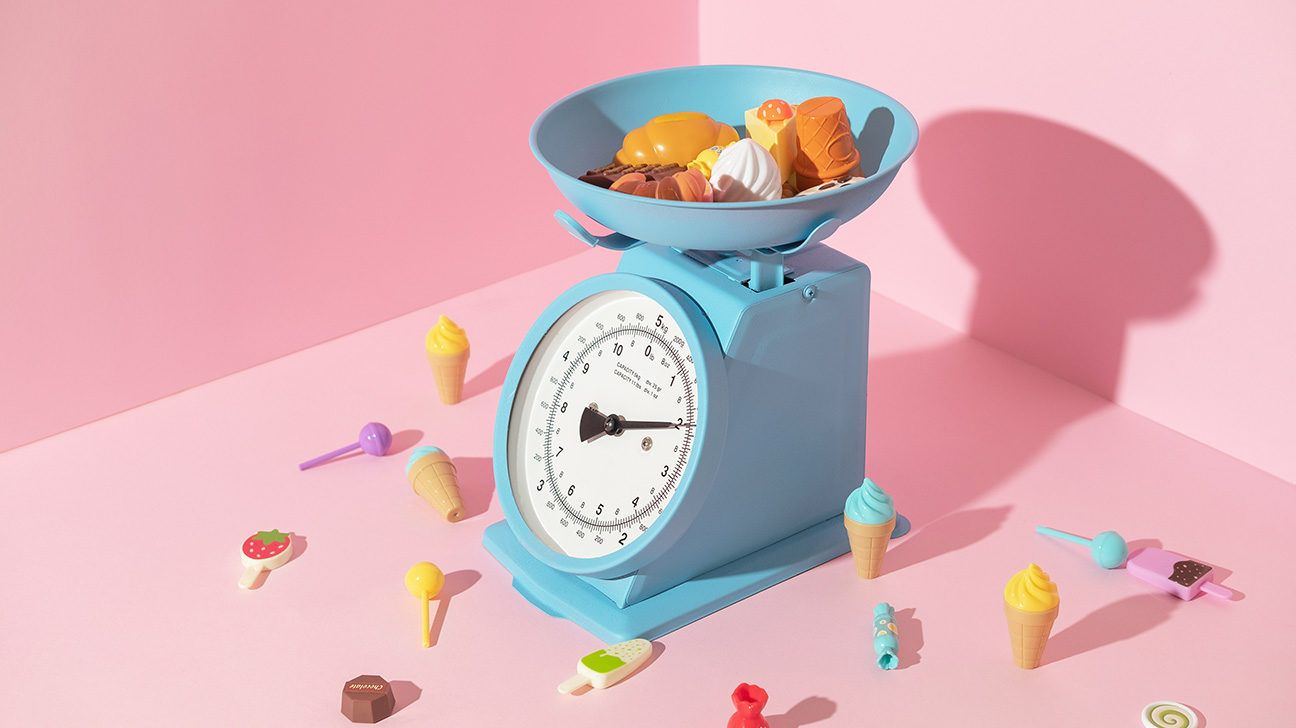If the S-word makes your mouth water and images of ice cream-filled doughnuts dance in your head, we get it. Sugar is a craveable ingredient.
The American Heart Association’s (AHA) recommended daily sugar intake is 36 grams for men and 25 grams for women. Following these guidelines can be difficult, as sugar is in a ton of foods and added sugar is especially sneaky, popping up in places you might not even suspect.
You expect it to be in a soda but maybe not in your pasta sauce. Yet there it is, being a creeper in the form of barley malt — or some other weird name.
Whether you’re trying to cut down on added sugar or you just want to be more mindful about when you consume it, we’ve got this guide to show you what the recommended limits look like and how to stay under them.
The average American consumes about 17 teaspoons of added sugar per day. But government dietary guidelines recommend limiting added sugar to no more than 10 percent of calories per day — in a 2,000-calorie diet, that’s about 12 teaspoons or 200 calories’ worth of sugar, and the AHA’s added sugar limits are even lower.
So what does that mean, exactly? It’s confusing AF. That’s why we’ve put together two hypothetical daily menus to show you exactly what eating 50 grams and 25 grams of added sugar per day actually looks like.
Note: Unless the brand is noted in the graphics above, these numbers are estimates from the USDA nutrient database. We’re referring only to added sugar, not natural sugars (e.g., those found in milk or a sweet potato).
You might have noticed that added sugar in those menus is highest in “healthy” items, such as whole-grain cereal, stir-fry, spinach salad with dried cranberries, and popcorn.
Added sugar lurks in processed foods, dried fruit, sauces, and condiments. “That means you have to learn to be a better label reader and know the various forms of sugar so that you can identify them,” says Chicago-based dietitian and chef Sara Haas, RDN, LDN.
Check your pasta sauce, ketchup, peanut butter, and basically anything else in a jar.
Sugar has many aliases, such as high-fructose corn syrup, honey, molasses, malt syrup, sucrose, confectioners’ sugar, dextrose, agave, and maple syrup. The list goes on.
The good news is that counting added sugar in grams is getting easier, thanks to changes in food label requirements. Many products already include an indented line for added sugars under the total sugar amount.
By 2020, companies with more than $10 million in revenue will be required by law to include the total added sugar in grams. And by 2021, companies with less revenue will be required to follow suit.
Our bodies don’t need added sugar to survive.
Piling on the added sugar can lead to insulin resistance, and that can drive a whole host of problems like diabetes and coronary heart disease.
Plus, just like booze, added sugar takes its toll on your liver. Eating it in excess puts you at a greater risk for developing non-alcoholic fatty liver disease (NAFLD), even if you’re not overweight.
Does this mean you have to police your food labels all day? Of course not.
Understanding added sugar is about empowerment and having the tools to cut back if you’re worried about the possible health effects.
And if you’re tired of the roller coaster of sugar highs followed by the dreaded plummets and you want to get off the rickety ride, checking your daily sugar consumption can help.
After a few days of reading food labels, you’ll be an added-sugar pro. Then you can eat it only when you want to — like on a dessert date with a pal — rather than having it show up uninvited in your afternoon snack.


